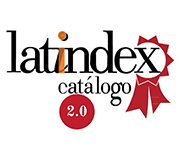Taxonomía para determinar la tipología del clúster de tecnologías de la información en Aguascalientes
DOI:
https://doi.org/10.20983/novarua.2017.14.1Palabras clave:
tipología del clúster de tecnologías de la información, clúster de tecnologías de la información, taxonomía tipología del clústerResumen
Esta investigación tiene como objetivo determinar la tipología del clúster de tecnologías de la información de Aguascalientes. Se aplicó una metodología cualitativa, la cual incluye una taxonomía desarrollada para identificar la tipología de los clústeres con base en las variables de estructura, gobierno y desempeño. Se aplicaron quince entrevistas altamente estructuradas a los miembros de la Cámara Nacional de la Industria Electrónica, de Telecomunicaciones y Tecnologías de la Información (Canieti). Los resultados son que el clúster es de una tipología marshalliana y su contribución al desarrollo del estado de Aguascalientes será creciente, al integrarse en su mayoría por micro, pequeñas y medianas empresas (mipyme).
Citas
Arikan, A. T., & Schilling, M. A. (2011). Structure and Governance in Industrial Districts: Implications for Competitive Advantage. Journal of Management Studies, 48(4), 772-803.
Barkley, D. L., & Henry, M. S. (2003). Are Industry Clusters a Good Bet for Rural Development? South Carolina: Clemson University, Regional Economic Development Research Laboratory.
Barnes, J., &. Kaplinsky, R. (2000). Globalization and the Death of the Local Firm? The Automobile Components Sector in South Africa. Regional Studies, 34(9), 797-812.
Boja, C. (2011). IT Clusters as a Special Type of Industrial Clusters. Informaticâ Economicâ,15(2), 184-193.
Cedillo-Campos, M. G., Piña-Monárrez, M. R., & Noriega-Morales, S. A. (2007). Hybrid Supply Chains in Emerging Industrial Countries: The Case of the Mexican Auto Industry. The 12th Annual International Conference on Industrial Engineering Theory, Applications & Practice, November 4-7, pp. 794-800.
Flores Preciado, J., Tene, R. H. , Vega Campos, M. Á,, & Reyes Fong, T. (Eds.). Investigaciones en la gestión de las ciencias administrativas, competitividad y finanzas (pp. 53-68). México: Gasca.
García Martínez, B., & González Acolt, R. (2014). El clúster automotriz en Aguascalientes: variables determinantes de su desarrollo. Zacatecas, México: Universidad Autónoma de Zacatecas.
García Martínez, B., González Acolt, R., & Leal Medina, F. J. S. (2012). Modelo de tipología de clústeres: aplicación al clúster automotriz en Aguascalientes. IV Congreso Internacional de Competitividad.
García Martínez, B., Leal Medina, F. J. S., & Melchor Durán, I. L. (2016). Tipología del clúster electrónico en Aguascalientes.
Giuliani, E. (2005). The Structure of Cluster Knowledge Networks: Uneven and Selective, not Pervasive and Collective. DRUID Tenth Anniversary Summer Conference on Dynamics of Industry and Innovation: Organizations, Networks and Systems (pp. 1-20).
Markusen, A. (1996). Sticky Places in Slippery Space: a
Tipology of Industrial Districts. Economic Geography, 72(3), 293-313.
Martin, R., & Sunley, P. (2003). Deconstructing Clusters: Chaotic Concept or Policy Panacea? Journal of Economic Geography, 3(1), 5-35.
Unger Rubín, K., & Chico Pérez, R. (2004). La industria automotriz en tres regiones de México: un análisis de clústeres. El Trimestre Económico, lxxi(284), 909- 941.
Vom Hofe, R., & Chen, K. (2006). Whither or Not Industrial Cluster: Conclusions or Confusions? The Industrial Geographer, 4(1), 2-28.
Descargas
Publicado
Número
Sección
Licencia
Todos los contenidos de la edición electrónica de la revista se distribuyen bajo una licencia de uso y distribución “Creative Commons Reconocimiento-No Comercial-Compartir Igual 4.0 Internacional” (CC-BY-NC-SA). Puede consultar desde aquí la versión informativa de la licencia.
Aquellos autores/as que tengan publicaciones con esta revista, aceptan los términos siguientes: a) Los autores/as conservarán sus derechos de autor y garantizarán a la revista el derecho de primera publicación de su obra; b) Se permite y recomienda a los autores/as difundir su obra a través de Internet (p. ej.: en archivos telemáticos institucionales o en su página web), lo cual puede producir intercambios interesantes y aumentar las citas de la obra publicada. (Véase El efecto del acceso abierto).












